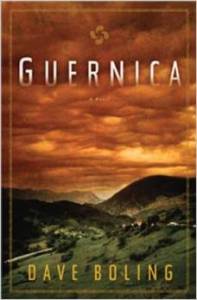Recently I read a post by artist Donald Fox concerning truth in art. His post was mostly a series of questions, with no answers, rather I drew from it that it was an exercise designed to challenge the reader to think about his questions. His final line, "Responsibility lies on both sides of the easel." seemed more to pass on the burden of decision to others, rather than tackle any of the challenges himself. I reread the post and felt it more esoteric than anything else.
However, as I pondered whether this was simply a collection of questions to fill in space, I remembered the town of Guernica. Guernica was the center of Basque life in Spain, considered an important and historical town in its culture. The Basques had always disputed the right of Spain to incorporate them into their country, yet during the Spanish Civil War they had managed to maintain their distance from the conflict. Generalissimo Fransisco Franco determined that the time was right for him to prove that his power over them was absolute. His allies from Germany wanted to test their weaponry from the air and determine just how much terror they could work on helpless people, and Franco gave them carte blanche to do as they wished. This attack was known as a terror bombing, and the assault included 21 German bombers and 3 Italian bombers, all with payloads of different types of bombs. They chose 26 April, 1937 - market day - as the day of the assault. Market Day meant that the people from the surrounding areas would be in town, swelling the normal population from 7,000 to close to 10,000. The defenseless populace had no warning. The waves of bombing utterly destroyed the town and killed many in the process.
When artist Pablo Picasso heard the news he was horrified, and this horror drove him to paint a mural which has attracted world wide fame and the attention of art historians. Picasso had been commissioned to paint a mural in the 1937 World's Fair in Paris. Once he read of the atrocities of Guernica, he abandoned his original plans and instead immediately set about memorializing the tragedy of this terror attack. Driven by his heritage as a Spaniard, and his loathing of war, this mural has become a memorial of the Spanish Civil War worldwide. The painting has attracted much discussion and study, for the composition of the piece, the "hidden" images, the symbolism and the legacy of the mural. Interpretations of Guernica vary widely and and often contradict each other.
So what is the truth of the mural? When pressed to explain the elements in Guernica, Picasso said,
...this bull is a bull and this horse is a horse... If you give a meaning to certain things in my paintings it may be very true, but it is not my idea to give this meaning. What ideas and conclusions you have got I obtained too, but instinctively, unconsciously. I make the painting for the painting. I paint the objects for what they are.
But ever since Guernica was unveiled to the world, the truth of it has varied from source to source. Picasso had his truth, taken from his own experiences as a Spaniard, but in the years since its unveiling, discussions have abounded in what others see, which often go far beyond what Picasso had originally placed in his work of art. It has been the subject of books, thesis papers, scholarly discussions and even televised programs about art.
Going back to the post with which I began then, what is truth? Benjamin Franklin once wrote "Believe half of what you see and none of what you hear." This can apply easily to Guernica. For years, the death tolls reported were abnormally low for such utter destruction, yet as the years passed, governmental papers came to light, from Germany, Russia, Spain and other countries, which moved the death toll starkly upward, from about 124 people to close to 800. To understand the truth of such a painting as Guernica, one needs to delve into study of the matter for oneself. Obviously, the immediate truth is that Picasso sought to put down what he viewed as an atrocity. After that, the truth becomes what others interpret as they view the work, and understand the history.
So, I do not believe that it is an easy matter to find truth in art, and yet it can be the easiest way to illustrate truth. Art, then, has the ability to present itself as different things to different people. Perhaps Donald Fox's last statement holds more importance than any other in his post about truth in art.
As a postscript, I can recommend the book Guernica, A Novel by Dave Boling. It is extremely well researched and well written, and is a compelling read.
Enjoy your life one day at a time.



Like you I do not believe that it is an easy matter to find truth in art. It is as personal as art itself. Very interesting blog. Thank you very much.
ReplyDelete